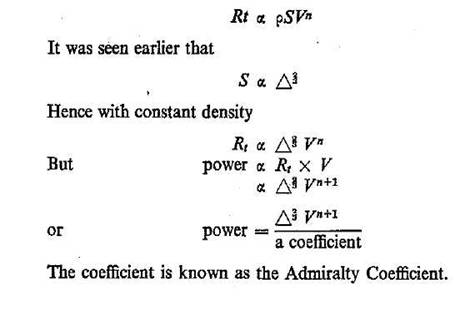Question
What
is a tender ship.
A vessel with a long slow lazy rolling period.
Why is it
important in a tender ship to keep the D/B tanks pressed up?
When the GM
is comparatively small, for example 0.16m to 0.20m the righting moments at
small angles of heel will also be small.
The ship
will thus be much easier to incline and will not tend to return so quickly to
the initial position.
The time
period will be comparatively long and a ship, for example 25 to 35 seconds, in
this condition is said to be ‘tender’.
This
condition is not desirable and steps should be taken to increase the GM by
lowering the effective centre of gravity of the ship.
A time
period of 15 to 25 seconds would generally be acceptable for those on board a
ship at sea.
Hence it is
important to keep the D/B tanks pressed up.
Question
What factors
influence the frictional resistance of a ship and what formulae is used to calculate this resistance.
As the ship moves through the water, friction between
the hull and the water causes a belt of eddying water adjacent to the hull to
be drawn along with the ship, although at a reduced speed.
The belt moves aft and new particles of water are
continually set in motion, the force required to produce this motion being
provided by the ship.
The frictional resistance of a ship depends upon:
(i) The speed of the ship
(ii) The wetted surface area
(iii) The length of the ship
(iv)
The roughness of the hull
(v) The density of the water.
Wm Froude developed the formula:
Rf=fSVn N
Where
f is a coefficient which depends upon
the length of the ship
L, the roughness of the hull and the
density of the water.
S is the wetted surface area in m2
V is the ship speed in knots.
n is an index of about 1.825.
Question
If
resistance ά
Coefficient,
Admiralty.
A coefficient used in power
estimating.
The Admiralty coefficient is
the cube root of the square of the displacement in tons times the square of the
speed in knots divided by the indicated or shaft horsepower.
The valve of the Admiralty
coefficient is practically identical for similar ships at corresponding speeds.
Is based on the assumption
that for small variations in speed the total resistance may be expressed in the
form:

Question
Effect of GM on
rolling
GM and rolling period
GM has a direct relationship
with a ship's rolling period.
A ship with a small GM will
be "tender" - have a long roll period - an excessively low or
negative GM increases the risk of a ship capsizing in rough weather.
It also puts the vessel at
risk of potential for large angles of heel if the cargo or ballast shifts. A
ship with low GM is less safe if damaged and partially flooded because the
lower metacentric height leaves less safety margin.
For this reason, maritime
regulatory agencies such as the IMO specify minimum safety margins for
sea-going vessels.
A larger metacentric
height, on the other hand can cause a vessel to be too "stiff";
excessive stability is uncomfortable for passengers and crew.
This is because the stiff
vessel quickly responds to the sea as it attempts to assume the slope of the
wave.
An overly stiff vessel rolls
with a short period and high amplitude which results in high angular
acceleration.
This increases the risk of
damage to the ship as well as the risk cargo may break loose or shift.
In contrast a
"tender" ship lags behind the motion of the waves and tends to roll
at lesser amplitudes.
A passenger ship will
typically have a long rolling period for comfort, perhaps 12 seconds while a
tanker or freighter might have a rolling period of 6 to 8 seconds.
The period of roll can be
estimated from the following equation.
![]()
Where g is the gravitational constant, k is the radius of gyration about
the longitudinal axis through the center of gravity and GM is the stability
index.